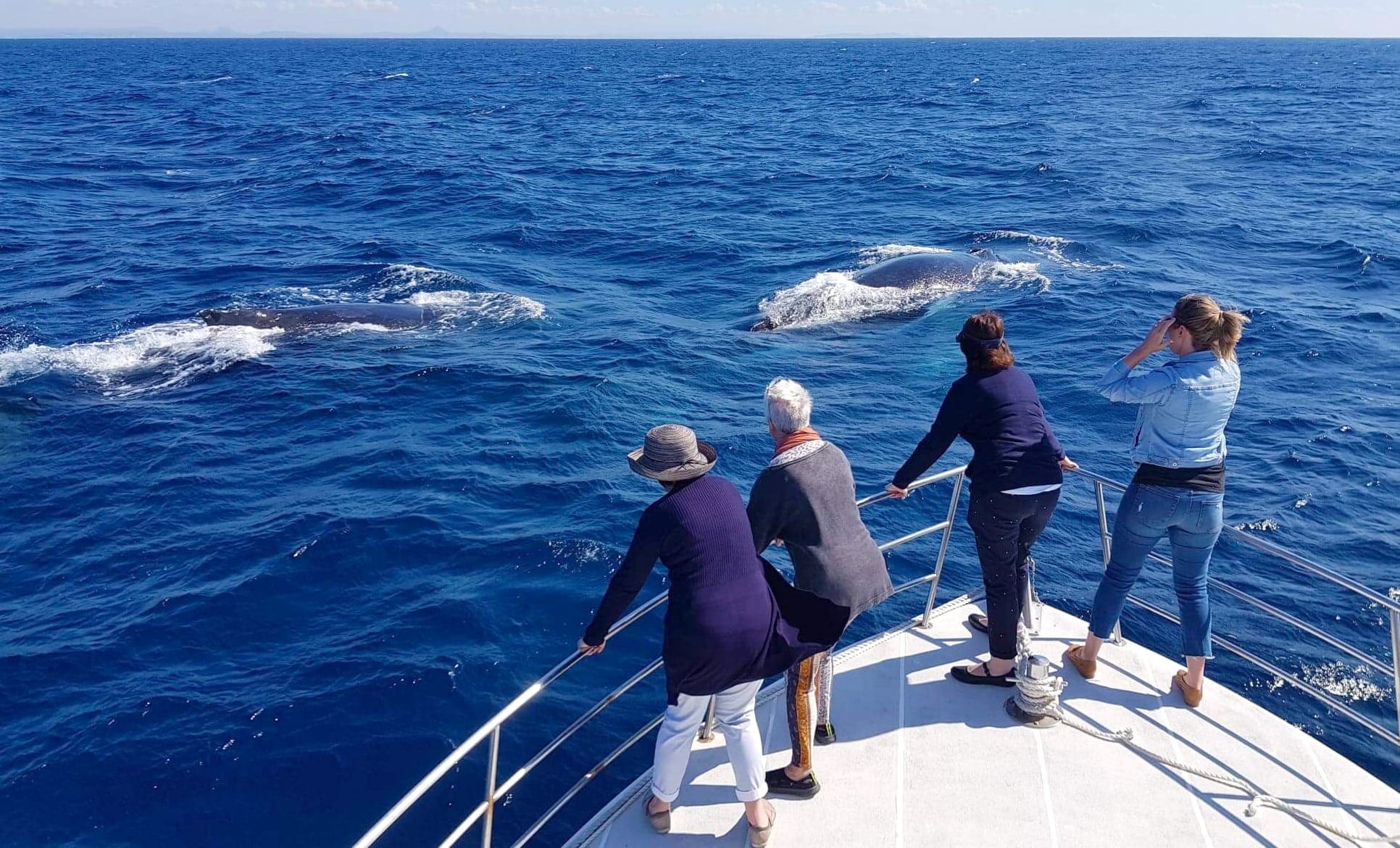WHEN TO GO WHALE WATCHING ON THE SUNSHINE COAST
The whale watching season in Queensland runs from early-mid June and ends late October. We at Sunshine Coast Afloat start our Whale Watching Cruises in July, once we know the whales are here in larger numbers and we are not spending a lot of our cruise time searching for them.
Like any activity that is venturing into an uncontrolled environment, all sightings and action on the day is governed by the whales themselves and if they want to play.
Humpback whales in Queensland have one of the longest migratory journeys of any mammal. We are talking 5,000 km, over three months each year. They swim north to birth their calves and teach them life skills, before returning south to chilly Antarctica.
Humpback whales might be marathon swimmers, but they are not sprinters, clocking up a leisurely 5-15 km/hour on their migration north.
The season brings something different depending on the time of your visit. The whales journey: –
Between July to September is when mating takes place, and it is a great time for whale watching as the males often but on great displays of beaching and fin and tail slapping to impress potential mates. Males have also been known to gather in groups in order to sing to and attract females.
June – July – The whales tend to be out wide and on a mission to get up north so we don’t see a lot of them from shore. It is the last year’s mothers and calves and the immature whales that reach Queensland waters first, followed by the mature whales then the pregnant females.
August – September – Pregnant females give birth to their babies in the warm northern waters. Newborn calves start learning how to survive and communicate – mugging, spy hopping, tail slapping. This is an ideal time to be viewing all this action. Whales heading south begin to arrive in our waters. The mature whales arrive first, with some still courting and mating.
Mid-September–October — The mothers and new calves arrive. This is a great time to go whale watching if you want to spot a beautiful baby humpback swimming along and suckling with its mother. We see lots of breach action as the calves master their new moves. More pod formations, at least mother and calf and possibly a male escort.
November – January – The whales head back to the Antarctic, first the pregnant females, then the immature whales, followed by the mature whales, and finally the mothers and calves. They feed on krill and stock up on blubber to enable them to sustain their next annual migration north.
February – March – The normal sequence of events is that last year’s mothers and calves head off first, followed a couple of weeks later by the immature whales, then a couple of weeks later by the mature males and females.
April – The pregnant female whales follow the others after having fed for longer to support themselves and their young throughout the journey.
The average human baby might weigh 3.5kg, but the average humpback whale calf weighs over 900kg!
The whale migration isn’t just interesting for visitors, but researchers too, who’ve been studying their behaviours closely and we are lucky enough to be part of the ongoing research, having scientists and researchers from Humpback & High-rises on board who are more than happy to share their findings with our guests.
If you’d like the chance to experience the magic of humpback newborns playing alongside their parents this whale watching season, and also the older humpbacks breaching and tail slapping, feel free to give us a call on 0412 155 814 or email us on – info@sunshinecoastafloat.com.au. You can also book online if you wish.




